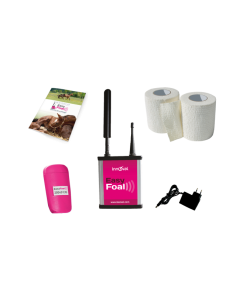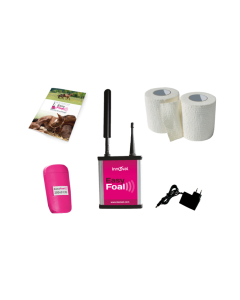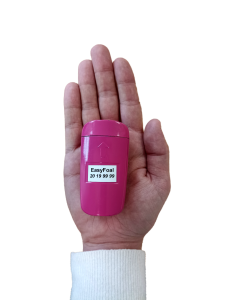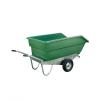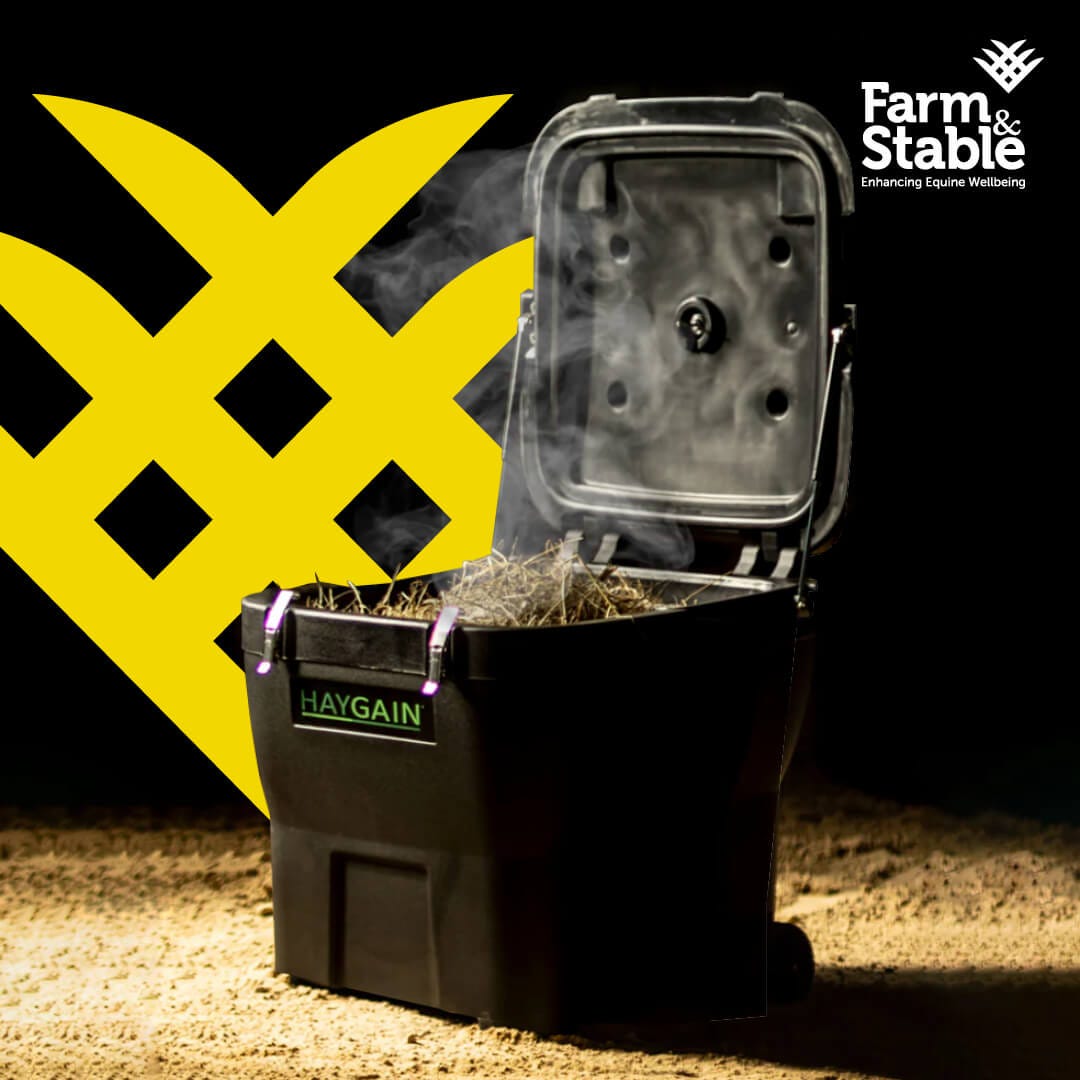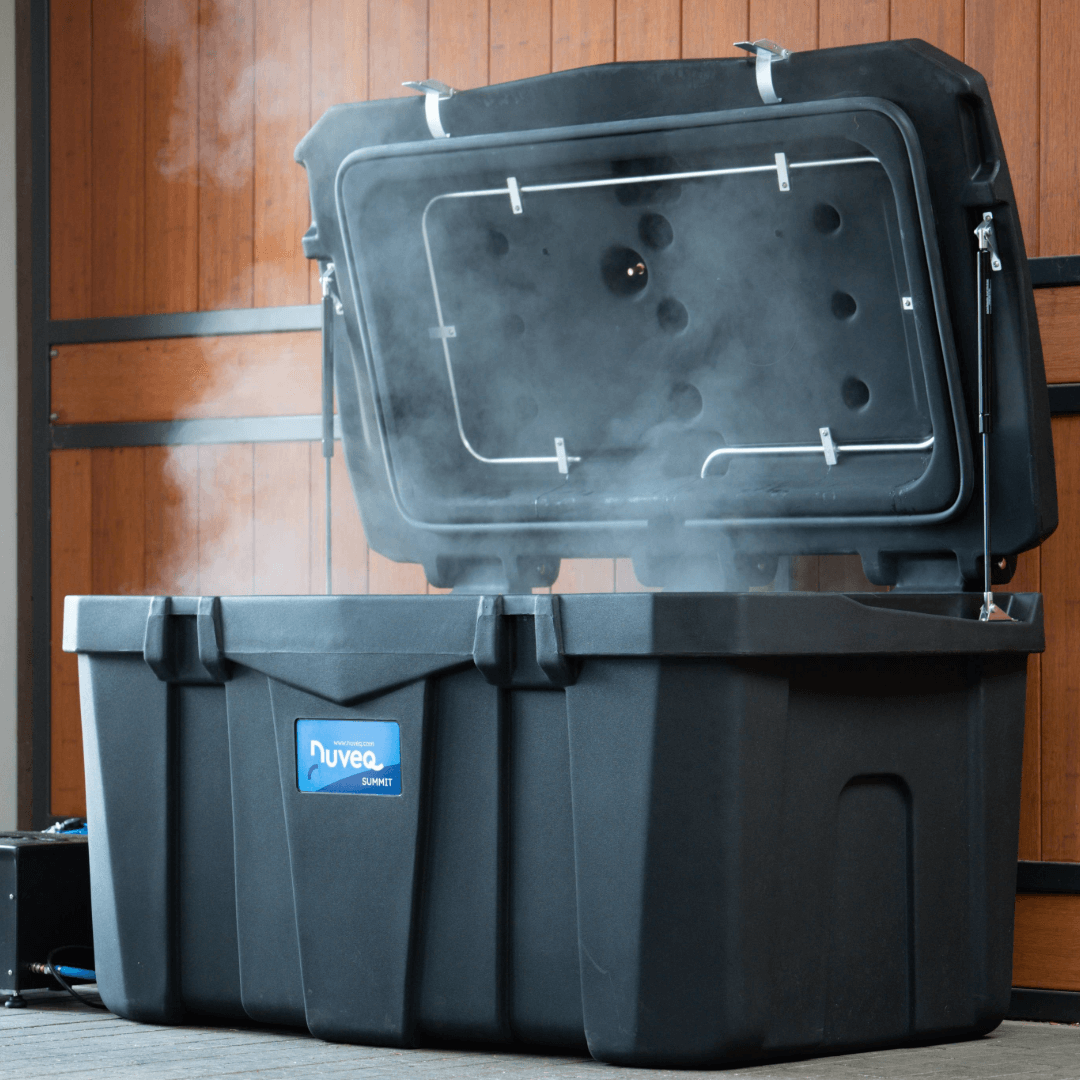
Bringing a new life into the world is a momentous occasion, especially in the realm of horse breeding. Ensuring a safe and monitored foaling process is crucial for the well-being of both the mare and the foal. Foaling alarms have become indispensable tools for horse breeders, providing them with a sense of security and the ability to respond promptly to any complications. Being present allows for immediate intervention in case of complications, ensuring the safety of both mare and foal. Quick decision-making, assisted deliveries, and prompt veterinary care are crucial elements that can make the difference between a successful foaling and a potentially tragic outcome.
In this blog post, we will explore the advantages and disadvantages of three popular foaling alarms: the Foalert magnet foaling alarm, the belt foaling alarm, and the EasyFoal Foaling Alarm.
Foalert Magnet Foaling Alarm
Advantages

Reliability: The Foalert magnet foaling alarm is known for its accuracy in detecting the onset of labour. The system relies on a magnetic trigger that is activated when the mare lies down to give birth.
Minimal False Alarms: The magnet system reduces the likelihood of false alarms, ensuring that breeders are only alerted when the foaling process is genuinely underway.
While magnet foaling alarms have proven to be effective in many cases, some breeders may express reservations about their use due to the perceived invasiveness for the mare. Here are several reasons why breeders might be hesitant to use magnet foaling alarms.
Disadvantages
Intrusiveness during Labour:
The process of attaching a magnet to the vulva of the mare can be seen as intrusive during an already vulnerable and sensitive time – the foaling process. Some breeders may be concerned that this added intervention could disrupt the natural flow of labour or cause unnecessary stress for the mare.
Risk of Injury or Discomfort:
The physical attachment of the magnet may pose a risk of injury or discomfort for the mare. There is potential for the magnet to be dislodged or cause irritation, especially if the mare is restless or agitated during labour.
Concerns about Infection:
Breeders may worry about the increased risk of infection associated with the use of a magnet foaling alarm. The attachment site is in a sensitive area, and if not properly sanitized, it could potentially introduce pathogens and increase the risk of post-foaling complications.
Preference for Non-Invasive Technologies:
Some breeders simply prefer non-invasive technologies that do not require physical attachments to the mare. They may opt for foaling alarms that utilize sensors or smart technologies without direct contact with the animal.
Variable Sensitivity Issues:
Breeders may experience challenges in finding the right balance of sensitivity for the magnet foaling alarm. If the system is too sensitive, it may trigger false alarms, leading to unnecessary interventions and disruptions.
Management of Multiple Pregnancies:
Breeders managing multiple pregnancies simultaneously may find it logistically challenging to use magnet foaling alarms. Ensuring proper placement for each mare and coordinating the attachment and removal of magnets can be time-consuming.
Adaptation Concerns:
Some mares may resist the attachment of a magnet, causing additional stress and anxiety. The breeder may worry about how well the mare will adapt to the presence of the foaling alarm, potentially affecting her overall well-being.
While magnet foaling alarms have their advantages in terms of accuracy and reliability, these concerns regarding invasiveness highlight the importance of considering the individual needs and preferences of both the breeder and the mare. In such cases, alternative foaling alarm systems that are perceived as less invasive, such as belt foaling alarms or those employing smart technologies, might be more appealing to breeders seeking a balance between effective monitoring and minimal interference during the foaling process.
Belt Foaling Alarm

Advantages
Cost-Effective: Belt foaling alarms are often more budget-friendly than other alternatives, making them accessible for a wider range of breeders.
Versatility: The belt can be easily transferred between mares, making it a practical choice for breeders managing multiple pregnancies simultaneously.
User-Friendly: These alarms are typically easy to use, requiring minimal setup and maintenance.
Belt foaling alarms, while cost-effective and easy to use, may not always be considered as reliable as other monitoring systems for several reasons.
Disadvantages
Sensitivity Challenges:
Belt foaling alarms rely on detecting abdominal contractions as an indication of labour. However, determining the appropriate sensitivity level to trigger an alarm without causing false alarms can be challenging. In some cases, the alarm may not activate when it should, leading to a delayed response during the critical foaling process.
False Alarms:
One common issue with belt foaling alarms is the potential for false alarms. External factors, such as the mare's movement, rolling, or even eating, can trigger contractions sensed by the belt, resulting in unnecessary alerts. Frequent false alarms can lead to breeder fatigue and decreased confidence in the alarm system.
Variable Positioning:
Achieving consistent and accurate positioning of the belt on the mare can be challenging. If the belt is not correctly placed or slips out of position, it may fail to detect contractions accurately, leading to unreliable monitoring.
Limited Detection Range:
Belt foaling alarms may have a limited detection range, making them less suitable for large pastures or when mares move around extensively. This limitation can result in missed signals, particularly if the mare is not within the effective range of the belt.
Interference from Environmental Factors:
Environmental factors such as extreme weather conditions, electrical interference, or the presence of other electronic devices may affect the performance of belt foaling alarms. Breeders must consider these external variables that could impact the reliability of the monitoring system.
Single Point of Measurement:
Belt foaling alarms typically measure contractions at a single point on the mare's abdomen. This single-point measurement may not provide a comprehensive view of the entire birthing process, potentially missing early signs of labour or complications.
Difficulty in Managing Multiple Pregnancies:
Breeders managing multiple pregnancies may find it challenging to effectively use belt foaling alarms for each mare simultaneously. Coordinating and monitoring multiple belts may lead to logistical challenges and potential oversights.
Wear and Tear:
The belts themselves may experience wear and tear over time, affecting their overall reliability. Regular maintenance and replacement of components may be necessary to ensure consistent performance. It is also not guaranteed that the mare will find the belt comfortable to wear.
While belt foaling alarms offer an affordable and user-friendly option for some breeders, it's crucial to acknowledge their limitations and carefully consider whether they align with the specific needs and conditions of the breeding environment. Breeders who prioritize reliability and precision in foaling monitoring may explore alternative technologies, such as magnet foaling alarms or those incorporating smart monitoring systems, to address potential shortcomings associated with belt foaling alarms.
EasyFoal Foaling Alarm
The EasyFoal Foaling Alarm stands out in the market with several advantages that make it a preferred choice for many breeders. While individual preferences may vary, here are some notable advantages of the EasyFoal Foaling Alarm compared to most other foaling alarms.

Advantages
Mare welfare:
This is arguably the most comfortable and least invasive foaling alarm for the mare to wear.
Smart Technology Integration:
One of the standout features of the EasyFoal Foaling Alarm is its integration with smart technology. Many models offer connectivity through mobile apps or other digital platforms, allowing breeders to receive alerts, updates, and real-time monitoring on their smartphones or devices. This level of connectivity enhances convenience and flexibility, especially for breeders who may not always be on-site.
Customisable Sensitivity Settings:
EasyFoal Foaling Alarms often come with customisable sensitivity settings. This feature allows breeders to adjust the alarm's responsiveness, reducing the risk of false alarms while ensuring timely notifications during genuine labour. The ability to fine-tune sensitivity addresses a common concern associated with foaling alarms.
Extended Detection Range:
Some EasyFoal models may offer an extended detection range compared to traditional foaling alarms. This extended range provides breeders with greater flexibility in managing large pastures or facilities, ensuring that mares are effectively monitored regardless of their location.
Multiple Alert Options:
EasyFoal Foaling Alarms typically offer various alert options, such as audible alarms, flashing lights, and mobile notifications. This versatility allows breeders to choose the most suitable alert method based on their preferences and the specific circumstances of their breeding operation.
Ease of Installation and Use:
The EasyFoal Foaling Alarm is designed to be user-friendly, with straightforward installation and setup processes. This simplicity makes it accessible to breeders of varying experience levels, promoting ease of use without sacrificing functionality.
Battery Efficiency:
The EasyFoal Foaling Alarms are known for their efficient use of batteries, with the sensors lasting around 7 years without recharging. The longer battery life reduces the need for frequent replacements and ensures consistent monitoring over extended periods, adding to the overall reliability of the system.
Real-Time Monitoring and Historical Data:
The smart technology integration allows for real-time monitoring of the mare's condition. Additionally, some models may store historical data, providing breeders with valuable insights into the mare's foaling patterns and behaviors. This data can be useful for future breeding planning and overall mare management.
Adaptability to Different Breeding Environments:
The flexibility of EasyFoal Foaling Alarms makes them suitable for various breeding environments, including both small-scale and large-scale operations. They can also be programmed to different breeds of horses that will have different foaling behaviours. This adaptability contributes to their widespread use across diverse settings.
Disadvantages
Learning Curve: The integration of smart technology may require breeders to familiarise themselves with app-based interfaces, potentially posing a learning curve.
Dependency on Connectivity: The reliance on mobile networks or internet connectivity may be a drawback in remote or rural locations.
While the EasyFoal Foaling Alarm offers numerous advantages, breeders should carefully consider their specific needs and preferences when choosing a foaling alarm. The decision may depend on factors such as the size of the breeding operation, the level of technological integration desired, and the overall reliability required for effective foaling monitoring.
Conclusion
In the world of equine breeding, choosing the right foaling alarm is a decision that requires careful consideration of one's specific needs and preferences. Each type of alarm comes with its own set of advantages and disadvantages. Whether opting for the precision of a magnet foaling alarm, the affordability of a belt foaling alarm, or the connectivity of a smart system like EasyFoal, breeders must weigh the features that align with their management style and priorities. Ultimately, the goal is to ensure a safe and healthy foaling experience for both the mare and her new born.


 Forgotten your password?
Forgotten your password?  Free Delivery on all orders over £95+VAT
Free Delivery on all orders over £95+VAT





